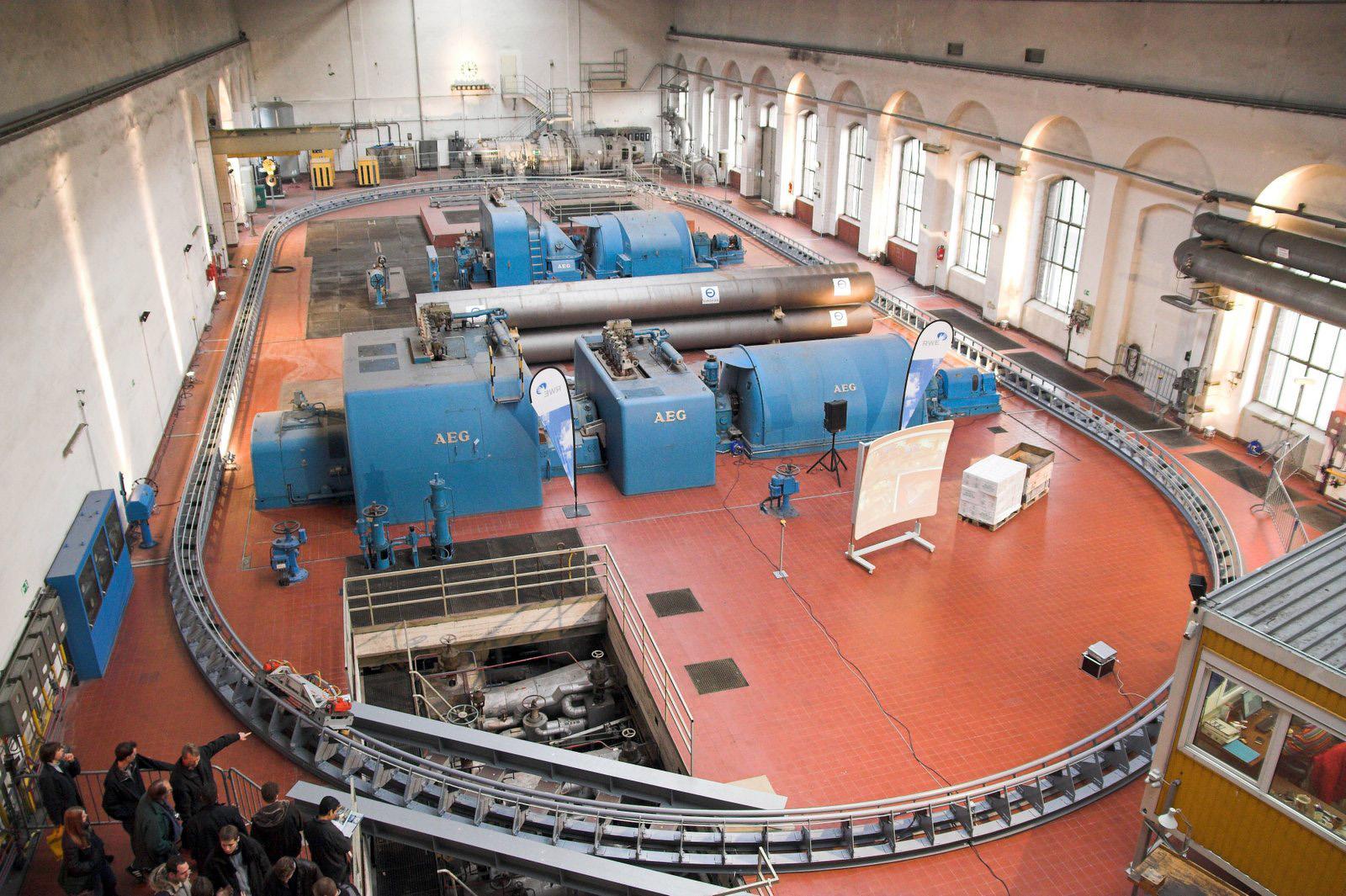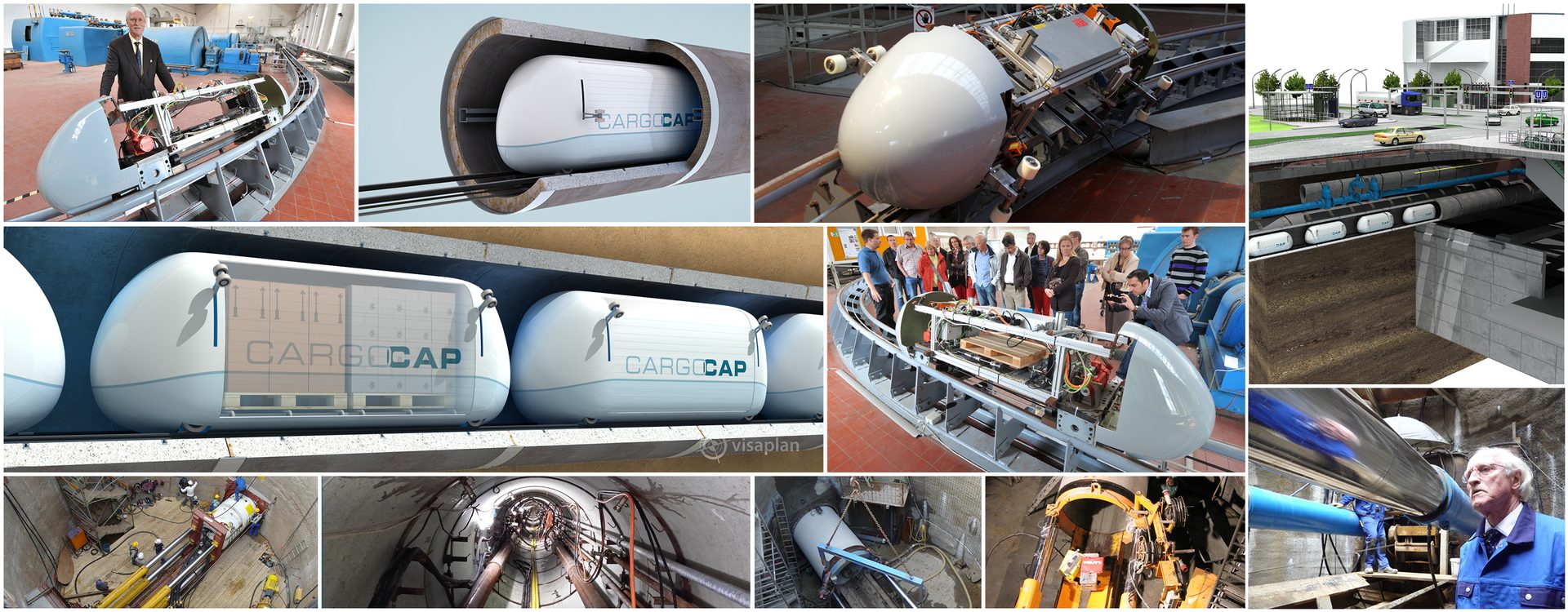
Our roads are congested, the air is bad and trade is booming. What could be more obvious than to move part of the logistics underground?
In 1997, Prof. Dr.-Ing. Dietrich Stein initiated a logistics concept for pipeline-bound freight transport, which was to become internationally known under the name "CargoCap - automatic underground freight transport". The concept is conceived as a 5th transport alternative for freight traffic in cities and conurbations, thus complementing the conventional transport routes of road, rail, water and air.
With the CargoCap system, palletised goods are automatically transported from goods distribution centres on the periphery of cities or conurbations to urban districts or to major customers, logistics centres through underground transport pipelines with an internal diameter of ≥ 2.0 m in a fast, economical, reliable and environmentally friendly manner. The transports are carried out by autonomous, electrically and fully automated transport vehicles (called caps) independent of above-ground traffic congestion and weather conditions.
You want to see CargoCap?
Quote:
CargoCap is one of the "100 products of the future
Groundbreaking ideas that will change our lives".
Publisher: Nobel Prize Winner Theodor W. Hänsch, 2007
A lot has been reported internationally about CargoCap. Therefore, you will find a lot of supplementary information on the internet under the term "CargoCap".
CargoCap at the Expo in Dubai
Why CargoCap?

Alternative transport routes and transport options to get goods to their destination faster and in a more environmentally friendly way are one of the top issues of the day. After all, a smooth supply of the economy, trade and consumers is one of the essential framework conditions for the economically successful development of a city or a metropolitan region. Trucks drive in conurbations at an average speed of about 16 km/h and have great difficulty keeping to their tight schedules due to congestion. This causes massive problems for all those who are regularly supplied with goods and suffer from congested access roads [ ]. In addition, the ban on diesel vehicles in city centres threatens to put logistics companies out of business.
Only fundamentally new, innovative developments can create a sustainable and economical logistics solution. Of central importance is their simple implementation in traditional transport systems and logistics concepts. The CargoCap system fulfils these requirements. It is an independent, efficient and easily expandable system that fulfils operational profitability requirements and can be quickly implemented technically and legally without infringing on the interests of citizens.
The CargoCap System
Instead of being transported on the road, goods are transported underground in transport pipelines with a diameter of ≥ 2.0 m. The transport vehicles, called caps, are each loaded with two to three pallets or containers in standard dimensions. The cargo is made available directly to the recipient at CargoCap stations or distributed from a city hub through environmentally friendly, sustainable connection logistics in the vicinity of the stations. Only at these stations is there a connection to the surface.
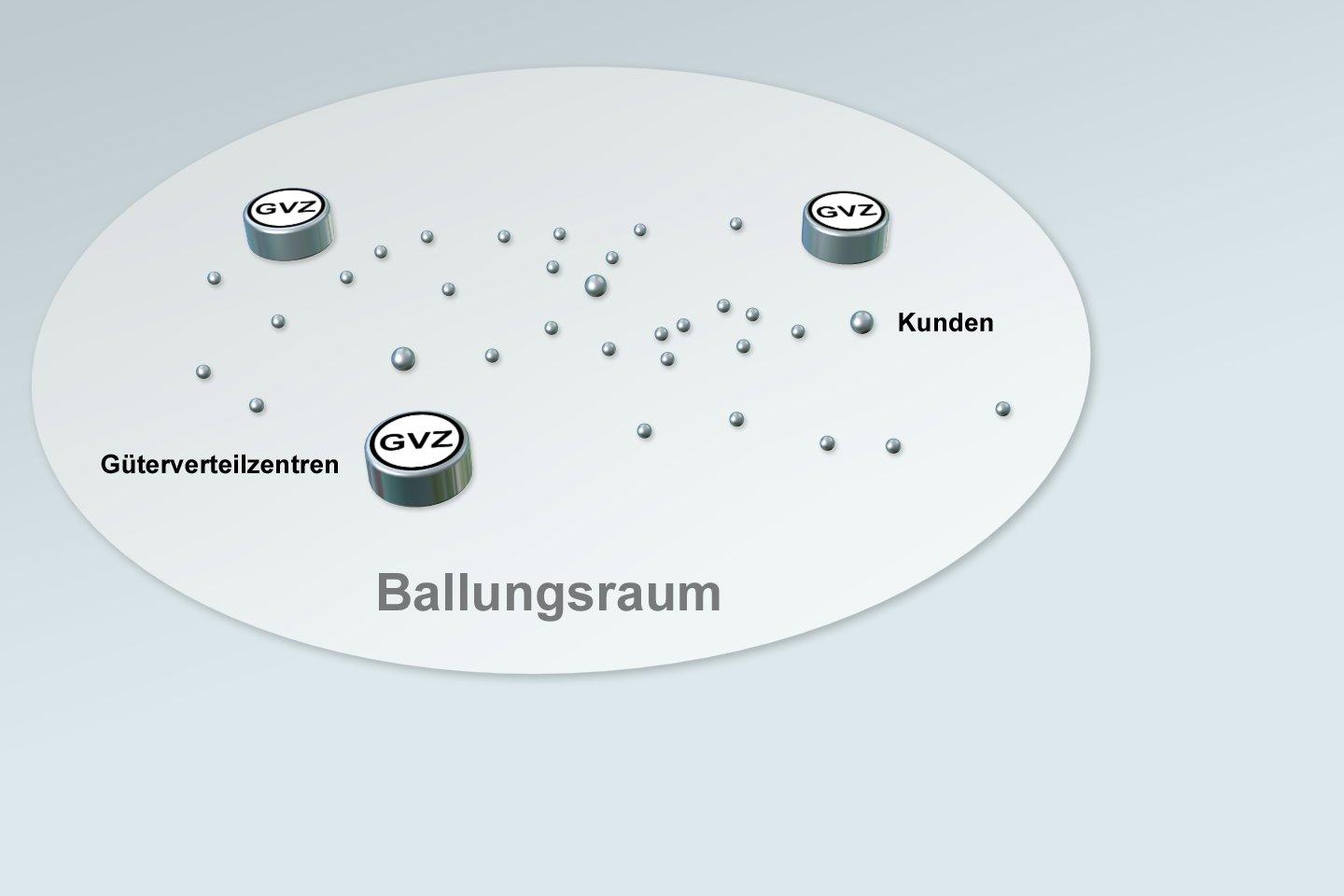

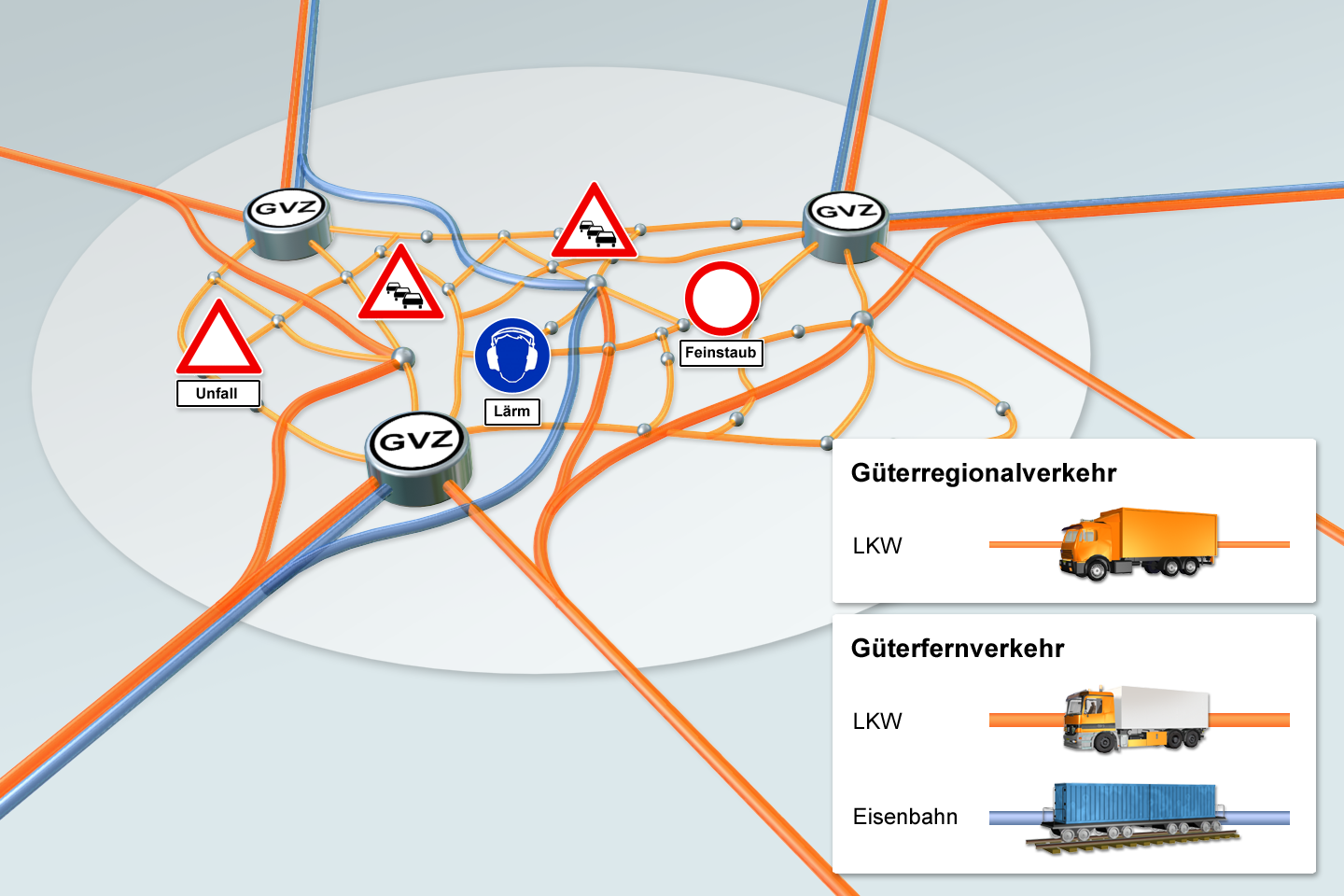
CargopCap stations can be set up in the middle of city centres as well as precisely on the assembly line of a factory. This is the first technology that makes a significant contribution to relieving road congestion and reducing traffic-related emissions and noise pollution without requiring additional space or traffic routes.

The construction and functionality of the caps, also when travelling in a convoy, were tested on a model track. They are aerodynamically shaped; wheels take over the load-bearing function; lateral guide rollers keep the caps on track. They are driven electrically via the wheels. Three-phase motors fed by frequency converters are used. This concept is characterised by robust construction, low energy consumption, low acquisition costs and a long service life with low maintenance requirements. Energy is transmitted without contact and is therefore maintenance-free.
The position of the caps is determined using RFID technology, with transponders mounted on the trackside serving as route markers. The caps read the information from the transponders during the journey and reference their position. Based on its own position and the position of the surrounding caps, each cap regulates the distance to the preceding one. When there is an increased demand for transport, individual caps are grouped together to form close-meshed convoys that travel at a constant speed of approx. 36 km/h at a distance of 4 metres from each other.
In order to ensure an even flow of traffic, the caps are discharged and reintroduced at the stations for loading or unloading.
An essential prerequisite for the grouping and splitting of the convoys is a new switch concept and the special design of the junctions. The track is designed passively in the area of the turnout. The cap takes over the active part of the branching and has two switch modules for this purpose. In the run-up to a branching, these swing the switch arms to the right or left, depending on the direction of travel, which then engage in guide rails mounted on the side of the track in the branching area. In this way, the cap can change to the desired direction without reducing its speed and subsequent caps can travel in the branching in any desired direction without waiting times.

An essential aspect of the CargoCap system is the fully automatic operation control. This concerns both the route, caps, shunting and cargo handling control as well as various safety controls. This operational control system is integrated into a higher-level logistics structure so that the transport customer can follow the movement of his goods at any time.
CargoCap Examples of Use
The CargoCap system can be used for supply and disposal in cities and conurbations as well as for solving internal logistics tasks.
City logistics using the example of a medium-sized city
Commercial and residential areas that have grown over the years are located in the immediate vicinity. A daily truck volume of up to 300 vehicles is a burden on the environment and residents.
In a distribution centre (DC) at an existing motorway junction, the goods required for the city are loaded onto caps and transported underground to the city centre. There, depending on their structure and layout, the goods can be delivered unhindered to a central point (city hub) or to several central points (city hubs). Further distribution to wholesalers and retailers located in the vicinity can be done, for example, with environmentally friendly e-carts or cargo bicycles.
Major customers located in the catchment area, such as shopping centres, hospitals, hotels, leisure parks, industrial estates, etc., can be integrated into the route planning.
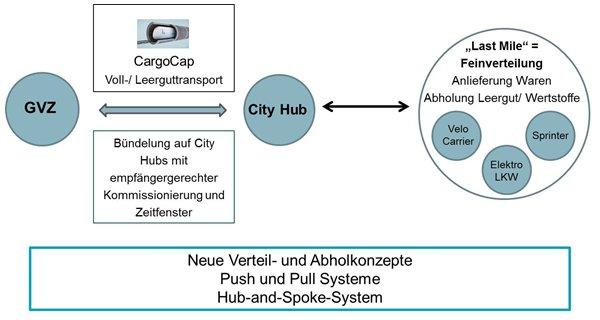
In-house logistics using the example of the automotive industry
Supplier parts have to be in production just in time or just in sequence and are transported by hundreds of trucks on deteriorated and congested roads.

With a CargoCap connection between a central distribution warehouse and CargoCap hubs (stations) at the individual production sites of the factory, supplier parts could be delivered and, in return, finished parts, recyclable materials, etc. could be transported away. Truck journeys between plants, warehouses and different production sites are no longer necessary.
